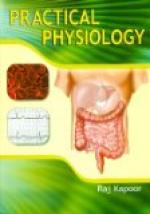Tendon (Lat. tendo, to stretch). The white, fibrous cord, or band, by which a muscle is attached to a bone; a sinew.
Tetanus (Gr. teino, to stretch). A disease marked by persistent contractions of all or some of the voluntary muscles; those of the jaw are sometimes solely affected; the disorder is then termed lockjaw.
Thorax (Gr. thoraxi, a breast-plate). The upper cavity of the trunk of the body, containing the lungs, heart, etc.; the chest.
Thyroid (Gr. thureos, a shield, and ei#x313;dos, form). The largest of the cartilages of the larynx: its projection in front is called “Adam’s Apple.”
Tissue. Any substance or texture in the body formed of various elements, such as cells, fibers, blood-vessels, etc., interwoven with each other.
Tobacco (Indian tabaco, the tube, or pipe, in which the Indians smoked the plant). A plant used for smoking and chewing, and in snuff.
Trachea (Gr. trachys, rough). The windpipe.
Tragus (Gr. tragos, a goat). The eminence in front of the opening of the ear; sometimes hairy, like a goat’s beard.
Transfusion (Lat. transfundo, to pour from one vessel to another). The operation of injecting blood taken from one person into the veins of another.
Trichina Spiralis. (A twisted hair). A minute species of parasite, or worm, which infests the flesh of the hog: may be introduced into the human system by eating pork not thoroughly cooked.
Trochanter (Gr. trochao, to turn, to revolve). Name given to two projections on the upper extremities of the femur, which give attachment to the rotator muscles of the thigh.
Trypsin. The ferment principle in pancreatic juice, which converts proteid material into peptones.
Tubercle (Lat. tuber, a bunch). A pimple, swelling, or tumor. A morbid product occurring in certain lung diseases.
Tuberosity (Lat. tuber, tuberis, a swelling). A protuberance.
Turbinated (Lat. turbinatus, from turbo, turbinis, a top). Formed like a top; a name given to the bones in the outer wall of the nasal fossae.
Tympanum (Gr. tympanon, a drum). The cavity of the middle ear, resembling a drum in being closed by two membranes.
Umbilicus (Lat., the navel.) A round cicatrix or scar in the median line of the abdomen.
Urea (Lat. urina, urine). Chief solid constitutent of urine. Nitrogenous product of tissue decomposition.
Ureter (Gr. oureo, to pass urine). The tube through which the urine is conveyed from the kidneys to the bladder.
Uvula (Lat. uva, a grape). The small, pendulous body attached to the back part of the palate.
Vaccine Virus (Lat. vacca, a cow, and virus, poison). The material derived from heifers for the purpose of vaccination,—the great preventive of smallpox.




